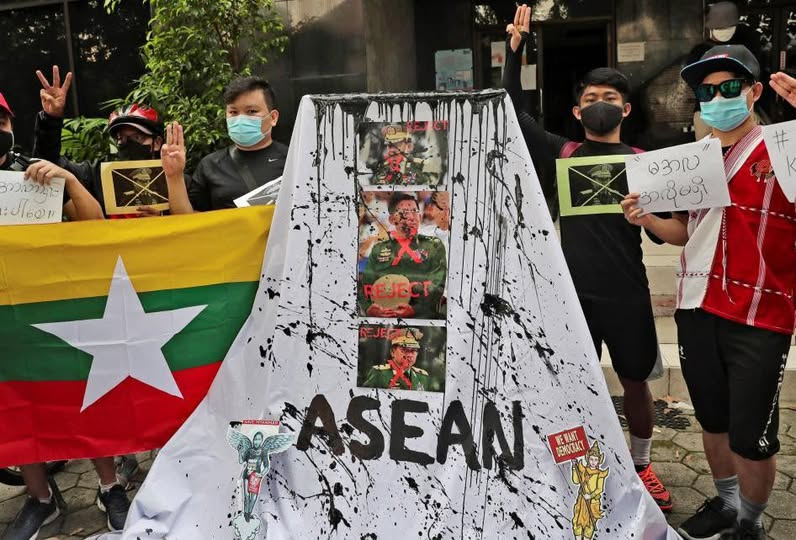MMNN English translated the MMNN Aung San Oo’s post
ASEAN’s Handling of the Myanmar Crisis: A Review of Regional Stability and Humanitarian Urgency
At the recent ASEAN–U.S. Summit, U.S. President Donald Trump prominently praised and oversaw the ceasefire agreement between Thailand and Cambodia, a conflict that had resulted in dozens of deaths along their shared border. This gesture sparked criticism among regional observers and the Myanmar public, highlighting ASEAN’s priorities, capabilities, and policy constraints in addressing humanitarian crises—particularly the ongoing civil war in Myanmar, which has affected millions.
For ASEAN, the Thailand–Cambodia border dispute is classified as a “Traditional Security Threat.” Such disputes involve territorial claims between member states and directly relate to ASEAN’s founding goal of promoting regional peace and stability. In this case, ASEAN had full authority to act as a mediator. With pressure from countries like the U.S. and Malaysia, a ceasefire was swiftly achieved, allowing ASEAN to showcase its ability to resolve regional conflicts—a “Quick Win” on the global stage.
In contrast, the Myanmar crisis presents a far more complex and difficult challenge for ASEAN’s diplomatic mechanisms.
The Non-Interference Principle
ASEAN’s core policy of non-interference in domestic affairs has become a major obstacle to effectively addressing the Myanmar situation. Since the current conflict resembles a civil war, ASEAN’s actions have been limited to issuing condemnations or restricting the Myanmar military junta’s participation in high-level meetings.
The conflict involves multiple actors: the military junta, the National Unity Government (NUG), ethnic armed organizations (EAOs), and local People’s Defense Forces (PDFs). This fragmentation has made implementation of the Five-Point Consensus (5PC) nearly impossible.
Humanitarian Crisis
Despite the staggering humanitarian toll—millions displaced and thousands of dead—the political complexity of Myanmar’s crisis prevents it from being treated as a “quickly resolvable” issue. ASEAN’s prioritization of the Thailand–Cambodia stability over Myanmar’s humanitarian emergency is increasingly evident.
By successfully resolving the Thailand–Cambodia dispute, ASEAN aimed to demonstrate its relevance and institutional capacity to the international community. However, this choice has also exposed ASEAN’s limitations in effectively addressing Southeast Asia’s deeper challenges—especially the Myanmar crisis.
Translator’s final comment
While efforts continue boasting for stopping this minor neighbours’ fight, Myanmar’s refugees and displaced populations remain hopeful for UN, US and ASEAN’s meaningful humanitarian support and political mediation.





